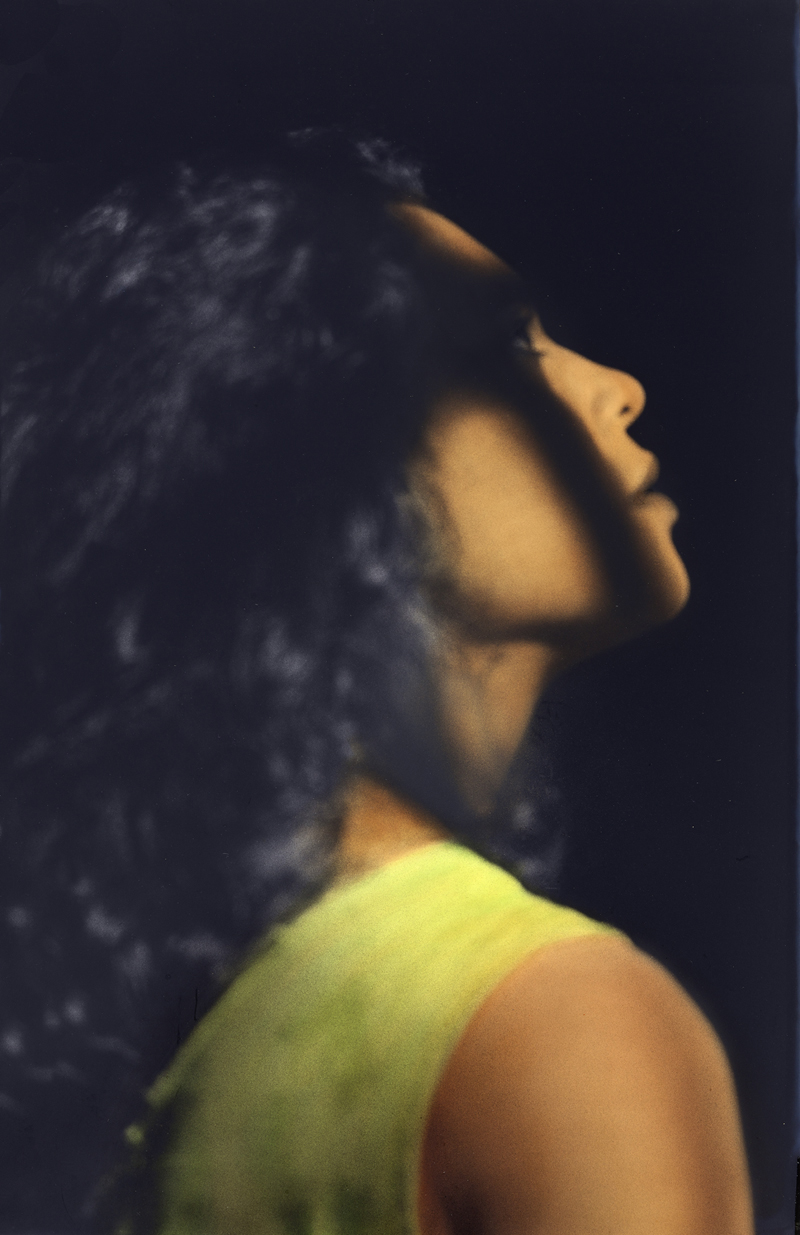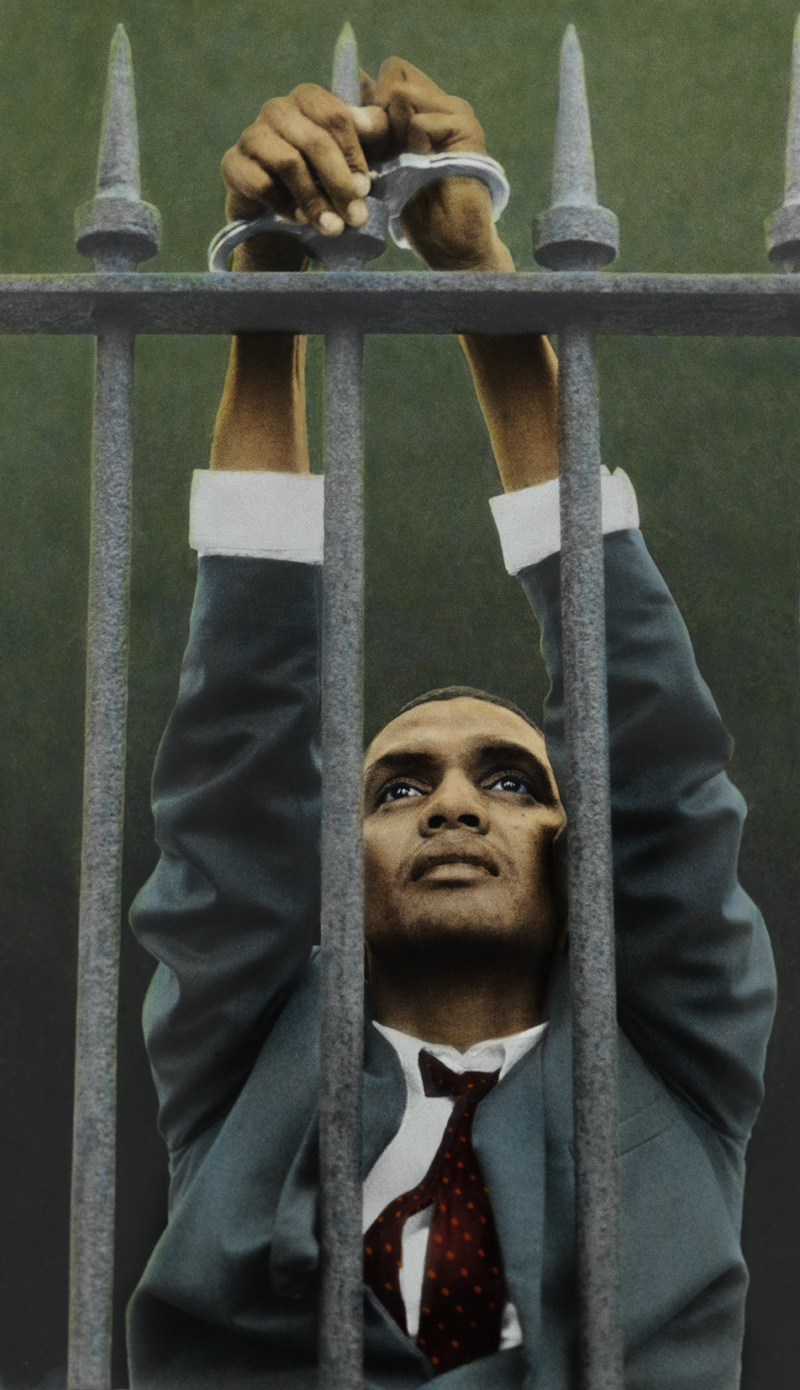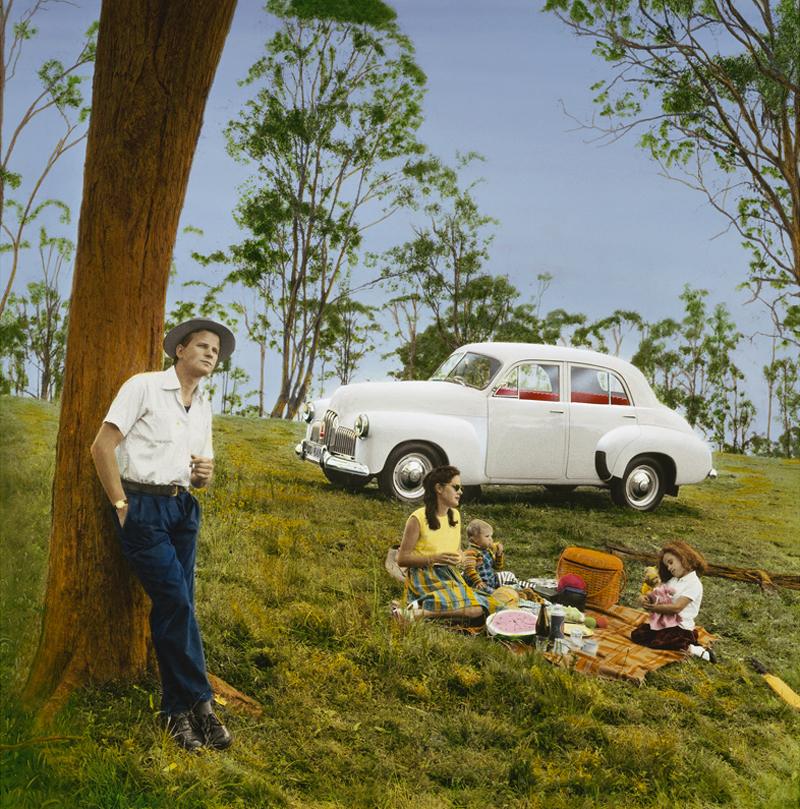Robyn Stacey | Islands in the Stream : Modified Myths

enquire about this work

enquire about this work

enquire about this work
ISLANDS IN THE STREAM : MODIFIED MYTHS
These three images are from a series of five images Modified Myths, made for the publication Islands in the Stream: myths of place in Australian culture,1988 edited by Paul Foss the then editor of Art and Text, a seminal art publication in Australia in the Eighties.
The first image in Modified Myths, a still life, is composed in the style of early travel posters, and serves as an introductory frontispiece. A globe of the world with Australia coloured pink, (as all nations in the British Empire were denoted on world maps or globes) was positioned in the foreground in front of an Albert Namatjira print. Followed by two images based on advertising that represented white culture; the Holden car with the idyllic nuclear family, the other of a man emerging from the surf at Bondi beach. Images that represented iconic Australia, the beach, the outdoors and the belief in the egalatarian nature of Australian life where everyone had the opportunity to better themselves. These images were juxtaposed against two images representing indigenous Australia, Untitled (Raymond) and Untitled (Lydia). The latter representing the Church and its impact on indigenous people and their cultural beliefs through its missionary outreach in the nineteenth century and Untitled (Raymond) obviously refering to indigenous incarceration and to the double standard of the egalatarian myth as experienced by indigenous people.
Robyn Stacey
Islands in the Stream : Modified Myths

enquire about this work

enquire about this work

enquire about this work
ISLANDS IN THE STREAM : MODIFIED MYTHS
These three images are from a series of five images Modified Myths, made for the publication Islands in the Stream: myths of place in Australian culture,1988 edited by Paul Foss the then editor of Art and Text, a seminal art publication in Australia in the Eighties.
The first image in Modified Myths, a still life, is composed in the style of early travel posters, and serves as an introductory frontispiece. A globe of the world with Australia coloured pink, (as all nations in the British Empire were denoted on world maps or globes) was positioned in the foreground in front of an Albert Namatjira print. Followed by two images based on advertising that represented white culture; the Holden car with the idyllic nuclear family, the other of a man emerging from the surf at Bondi beach. Images that represented iconic Australia, the beach, the outdoors and the belief in the egalatarian nature of Australian life where everyone had the opportunity to better themselves. These images were juxtaposed against two images representing indigenous Australia, Untitled (Raymond) and Untitled (Lydia). The latter representing the Church and its impact on indigenous people and their cultural beliefs through its missionary outreach in the nineteenth century and Untitled (Raymond) obviously refering to indigenous incarceration and to the double standard of the egalatarian myth as experienced by indigenous people.